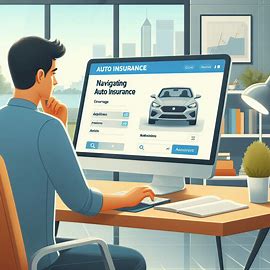Introduction
Auto insurance is more than just a legal requirement; it’s a financial safeguard that protects you, your passengers, and your vehicle in the event of an accident. However, navigating the world of auto insurance can be complex and overwhelming, with various options, terms, and policies to consider. This guide aims to demystify auto insurance by explaining coverage types, deductibles, premiums, and tips for finding the best policy to fit your needs.
Understanding Auto Insurance Coverage
What is Auto Insurance Coverage?
Auto insurance coverage refers to the protection provided by an insurance policy in case of accidents, theft, or other incidents involving your vehicle. Each policy can have different coverage types that cater to specific needs.
Types of Auto Insurance Coverage
- Liability Coverage:
- This is mandatory in most states. It covers bodily injury and property damage to others if you are at fault in an accident.
- Collision Coverage:
- This covers damage to your vehicle resulting from a collision with another car or object, regardless of who is at fault.
- Comprehensive Coverage:
- This protects against damages not involving a collision, such as theft, vandalism, or natural disasters.
- Personal Injury Protection (PIP):
- PIP covers medical expenses for you and your passengers, regardless of who is at fault. It may also cover lost wages and other expenses.
- Uninsured/Underinsured Motorist Coverage:
- This coverage protects you if you are in an accident with someone who does not have sufficient insurance to cover damages.
Understanding Deductibles
What is a Deductible?
A deductible is the amount you must pay out of pocket before your insurance coverage kicks in. Understanding deductibles is crucial for managing your auto insurance costs effectively.
Types of Deductibles
- Fixed Deductible:
- This is a set amount you agree to pay before your insurance covers the rest. For example, if you have a $500 deductible and incur $2,000 in damages, you will pay $500, and your insurance will cover the remaining $1,500.
- Variable Deductible:
- Some policies allow you to choose a deductible amount, which can affect your premiums. Generally, a higher deductible leads to lower monthly premiums, while a lower deductible means higher premiums.
How to Choose Your Deductible
When selecting your deductible, consider:
- Financial Situation: Choose an amount you can comfortably afford to pay in the event of a claim.
- Driving Habits: If you frequently drive in high-traffic areas, a lower deductible might be beneficial.
- Premium Costs: Analyze how different deductible amounts affect your monthly premiums.
Understanding Premiums
What is an Insurance Premium?
An insurance premium is the amount you pay for your insurance policy, typically on a monthly or annual basis. Your premium is influenced by various factors, including your coverage options, driving record, location, and even credit history.
Factors Affecting Your Premiums
- Driving Record: A clean driving record with no accidents or violations can lower your premiums, while a history of accidents may increase them.
- Vehicle Type: The make and model of your vehicle influence premiums. Luxury vehicles or cars with high repair costs generally have higher premiums.
- Location: Insurance companies consider your location when calculating premiums. Urban areas with higher accident rates may have higher premiums than rural areas. “auto insurance rates by state,” “how location affects car insurance costs”
- Coverage Levels: The more coverage you choose, the higher your premiums will be. It’s essential to find a balance between adequate protection and affordability.
- Credit Score: Many insurers use credit scores to assess risk. Maintaining a good credit score can help lower your premiums. “how credit score affects insurance rates,” “improving your credit for better insurance”
Tips for Finding the Best Auto Insurance Policy
- Shop Around: Obtain quotes from multiple insurers to compare prices and coverage options. Websites like Zebra can help you compare rates easily.
- Consider Bundling: If you have other insurance policies (like home or renters), consider bundling them with the same provider to receive discounts.
- Look for Discounts: Many insurers offer discounts for safe driving, good grades for students, or low mileage. Always ask about available discounts.
- Review Your Coverage Annually: Life changes can impact your insurance needs. Review your policy at least once a year to ensure you have adequate coverage.
Frequently Asked Questions (FAQs)
1. What is the minimum coverage required for auto insurance?
Minimum coverage requirements vary by state. Typically, you are required to have liability coverage that meets your state’s minimum limits.
2. How can I lower my auto insurance premiums?
You can lower your premiums by maintaining a clean driving record, opting for a higher deductible, and seeking discounts offered by insurers.
3. Is comprehensive coverage worth it?
If you live in an area prone to theft, natural disasters, or have a newer vehicle, comprehensive coverage can provide peace of mind and financial protection.
4. What should I do after an accident?
After an accident, ensure everyone is safe, call the authorities, document the scene, and notify your insurance company as soon as possible.
5. Can I switch insurance providers anytime?
Yes, you can switch insurance providers at any time. However, it’s essential to ensure you have a new policy in place before canceling your existing one to avoid a lapse in coverage.
Conclusion
Navigating auto insurance can be complex, but understanding coverage types, deductibles, and premiums can help you make informed decisions. By researching your options and comparing providers, you can find the right policy to protect yourself and your assets. Remember, the goal of auto insurance is to provide you with peace of mind while on the road, so choose wisely!










